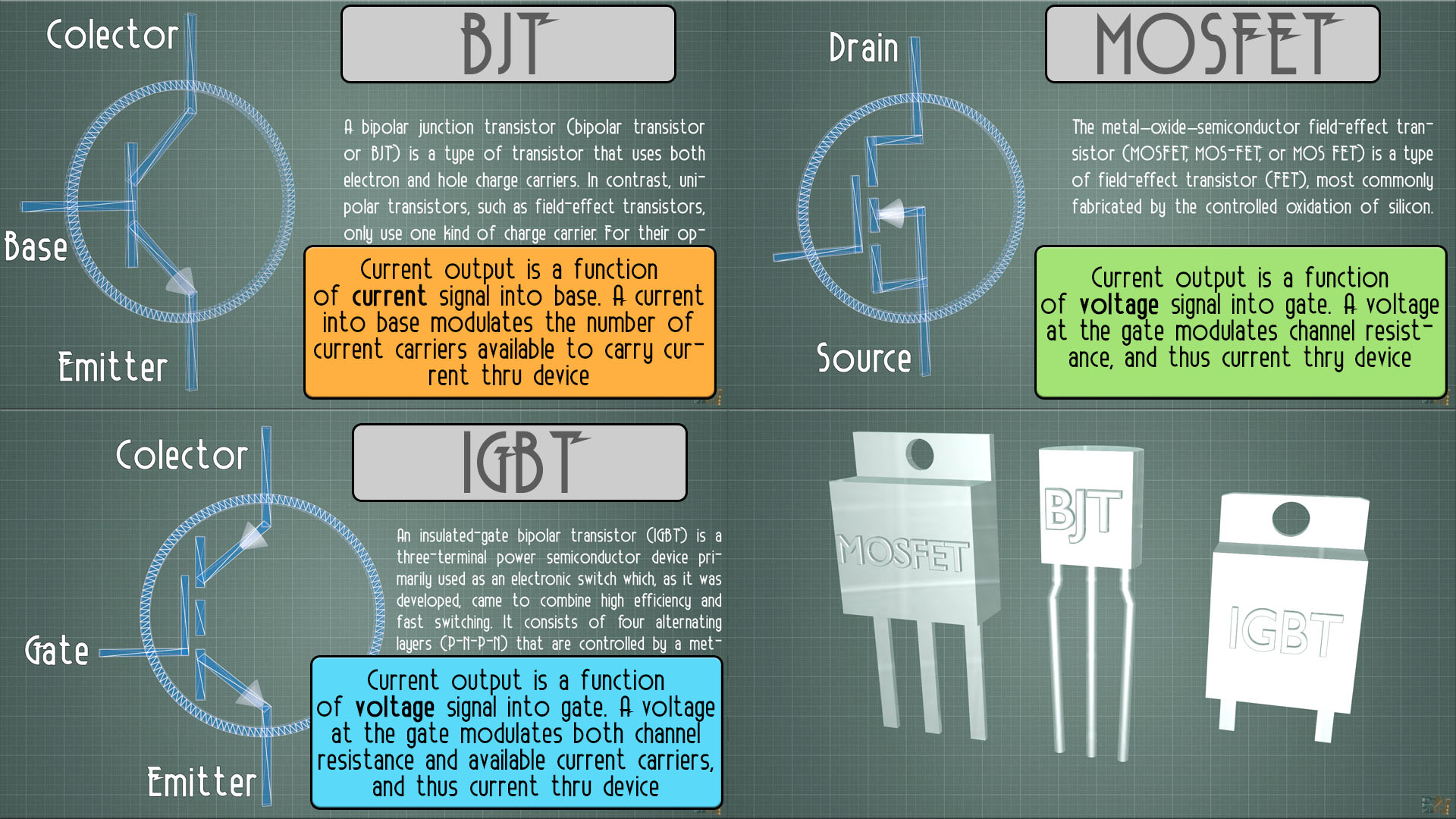
However, the gate drive voltage is critical to achieve the lowest RDS(on), and on-resistance dramatically increases as drive voltage approaches the gate threshold voltage. Alternatively, a MOSFET requires gate current only to charge and discharge its gate capacitances so under dc drive conditions the drive current is negligible. High-gain devices minimize such losses, and the fact that bipolar transistors require less than 1 volt to fully turn on and show better temperature stability can be useful in low-voltage or battery-powered applications. For example, bipolar transistors require sufficient base current to achieve their lowest R CE(sat) values, and the base drive loss must be taken into account in power dissipation calculations. Care must be taken to check the drive conditions when comparing the two technologies. This characteristic leads to bipolars running cooler at high current densities, and/or higher continuous currents for comparable die area.ĭrive requirements are arguably where bipolars and MOSFETs differ most. Because bipolar-transistor gain rises with temperature and reduces the V BE component of VCE(sat), the rise in bipolar R CE(sat) is generally half that of a MOSFET's equivalent R DS(on). How switch resistance changes with temperature is another important factor in determining the current capability of a power switch.
#Transistor vs mosfet series#
When a bidirectional capability is required, this attribute can eliminate the need for a series diode or back-to-back MOSFET pair and their attendant conduction losses. Also, don't forget that bipolar transistors block voltage in two directions, as specified by their BV EBO or BV ECO characteristic. A similarly rated MOSFET has such high specific on-resistance and poor current capabilities that it requires packages such as D-PAK to accommodate the necessary silicon area. For example, the 450V-rated FMMT459 NPN transistor has a current capability of 150mA and a typical R CE(sat) of just 1.4ïï that allows SOT-23 packaging. The difference in the exponent value in these formulae emphasizes the specific-area-resistance advantage that the bipolar transistors hold over MOSFETs as breakdown voltages increase. Breakdown voltage versus R CE(sat) for the Zetex third generation transistor series Specific on-resistance (20V devices)įigure 2. As is demonstrated in the straight-line plot in Figure 2, the relationship between breakdown voltage and collector-emitter saturation voltage for the Zetex third generation transistor series yields:įigure 1. MOSFETs don't possess any similar conductivity modulation mechanism, which accounts for one of the bipolar transistor's advantages. Furthermore, bipolar transistors benefit from conductivity modulation of the resistive collector region when operated as a saturated switch, significantly reducing the R CE(sat).

By optimizing process technology and chip layout, voltage biasing and current flow is evenly distributed across the chip area to maximize silicon efficiency. Under the correct drive conditions, it's worth noting that bipolar transistors have matched or bettered MOSFETs in terms of die-area-specific on-state resistance (see Figure 1).

Higher voltage MOSFETs also suffer from the high resistance of the lightly doped drain region so on-resistance typically increases proportionally with breakdown voltage:

The results are spectacular – especially at low breakdown voltages – but current flow remains concentrated in narrow channel regions. Trench MOSFETs give lower on-resistance by allowing greater channel density. The first characteristic that designers most often consider is on-state resistance for a given breakdown voltage. It's therefore important to review the characteristics and benefits of each technology to extract the best system performance. Meanwhile, developments in bipolar transistors continue to position the technology to rival or exceed MOSFET performance in many applications. In recent years, MOSFETs have benefited from huge investments in technology and promotion alike, overshadowing bipolar devices to the degree that many designers view bipolars as old technology.


 0 kommentar(er)
0 kommentar(er)
